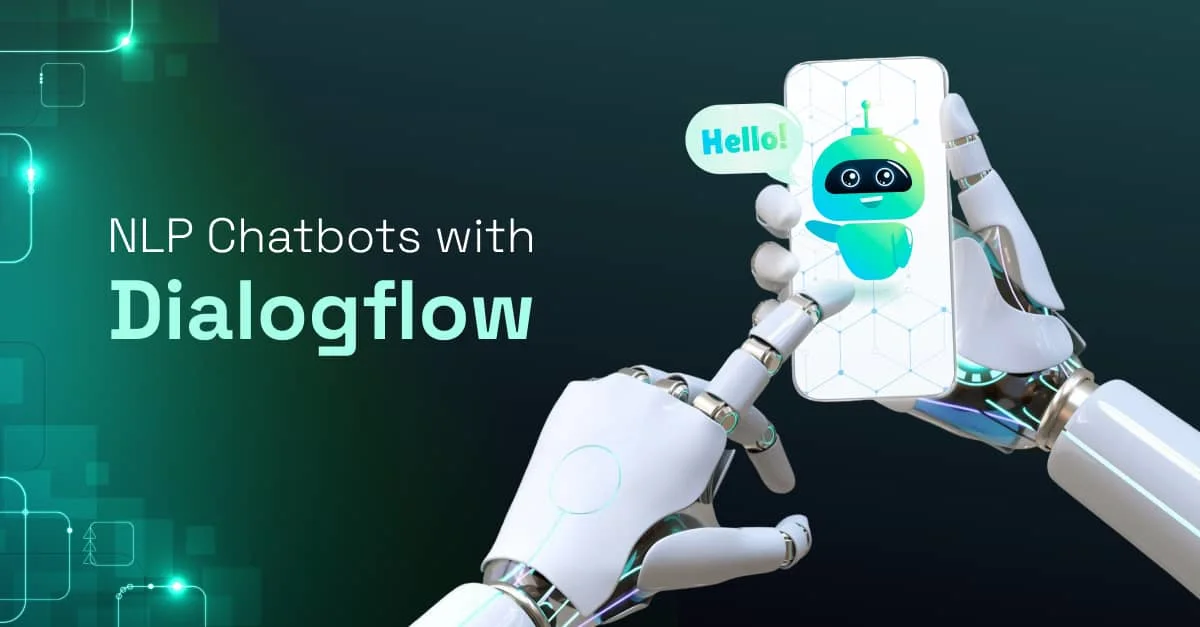Thanks to NLP, computers can now comprehend natural language as people do. Natural language processing uses artificial intelligence to take real-world input, process it, and make sense of it in a way that a computer can comprehend, regardless of whether the language is spoken or written. Businesses need a mechanism to effectively process the vast amounts of unstructured, text-heavy data they utilize. Until recently, businesses could not efficiently analyze the natural human language that made up a large portion of the information created online and kept in databases. Natural language processing(NLP) with Dialogflow is handy in this situation.
Siri, Alexa, and Google Home, for instance, can understand what you are saying and what you want them to say in response. Chatbots steer users in a particular direction without knowing their actual needs and requirements. Without NLP, your chatbot won’t be able to comprehend the user’s context. Natural language processing with Dialogflow gives user inputs context and meaning so your chatbot can produce the best response possible.
What is Dialogflow and how does it work?
A conversational user interface can be designed and integrated into mobile apps, web applications, devices, bots, interactive voice response systems, and other uses using Dialogflow. Creating a conversational user interface that suits your use cases is simple. Dialogflow is capable of analyzing and comprehending a variety of user input, including text and audio. In essence, it helps your chatbot pick up a natural language. Listed below are the terms of Dialogflow that will help you understand how it can benefit your chatbot.
- Agents – A Dialogflow agent is a virtual agent that manages user conversations from beginning to end. It deciphers user input, ascertains context, and sends the most appropriate response.
- Intent – Intent, as the name suggests, determines the user’s intention based on their input and chooses the most appropriate outcome. A response to an intent can take one of two forms. You can set the response as text or in JSON format.
- Entity – An entity is essentially a collection of typical data types. For instance, a list of times, dates, cities, colors, etc. There are some pre-built system entities in Dialogflow. According to your needs, you can design your unique entities.
- Training Phrase – Training words can be thought of as your user’s expression or as an example of what they might type or say. Dialogflow matches the intent when an end-user expression resembles one of these phrases.
- Context – Natural language contexts and Dialogflow contexts are identical. Context can be divided into two categories: input context and output context. Output contexts manage active contexts by Dialogflow. Any output contexts set up for an intent become active when it matches. Input contexts control intent matching. Dialogflow matches intents configured with input contexts that are a subset of active contexts more frequently while contexts are active.
- Knowledge base – An assortment of documents we can give Dialogflow is referred to as a knowledge base. These knowledge documents include details that your user in conversation may mention.
- Fulfillment – A more dynamic response is possible with fulfillment. Some integrations can be used with Dialogflow. You may combine Fulfillment with your database and Calander to update data, mark events, etc. For instance, if a user wishes to book an appointment for Monday, your integration service can search your database and send the user information about availability for Monday appointments.
How Dialogflow Benefits You
Dialogflow is superior to other chatbot development tools in many ways. Of course, certain restrictions exist, but it is undoubtedly the best option for developing many different kinds of chatbots. Let us summarise the benefits of Dialogflow below.
- Chat agents can be imported and exported.
- There is support for numerous languages. Dialogflow currently provides speech-to-text functionality in 32 languages, text-to-speech functionality in 28 languages, and translation between 104 languages with Google Translate.
- Recognizing input based on context to comprehend user requirements fully.
- You can manage errors better with comprehensive error reporting.
- You can always get some fantastic analytics reports for a more in-depth understanding when it comes to Google.
- Using webhook connectors and third-party integrations, you can manage and update your database and provide real-time data to your clients.
- Several chatbots and projects can utilize a single agent.
- Dialogflow Standard Edition is free (Though there are limits on the number of requests you can make).
Therefore it is a much more advanced NLP and Chatbot development platform than most other NLP providers. Venture7 can help you make your site more interactive and efficient with our chatbots. Live chat is an application that allows you to add an instant messaging feature to your website or social media channels, allowing visitors to talk to a real person directly. We implement Dialogflow API for such Bots.





